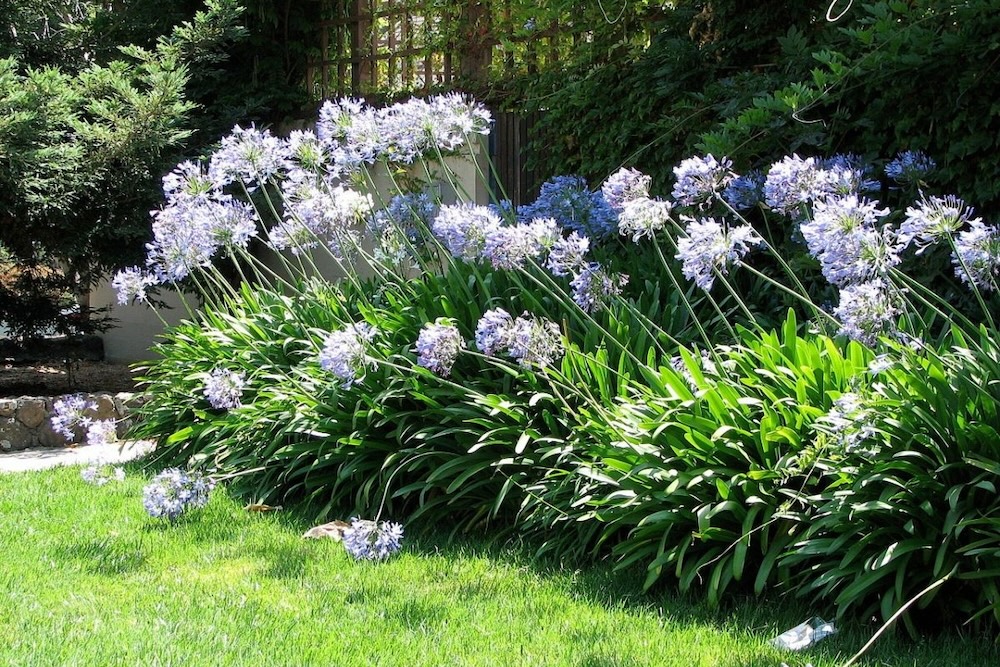Usual Agapanthus Issues and Exactly How to Resolve Them
Usual Agapanthus Issues and Exactly How to Resolve Them
Blog Article
Grasping the Art of Agapanthus Care: Vital Steps for Healthy Development and Dynamic Blossoms
In the realm of horticulture, the cultivation of agapanthus stands as a rewarding endeavor for those who seek to nurture these sophisticated blooming plants. With their striking flowers and graceful foliage, agapanthus has captured the focus of garden enthusiasts worldwide. Nonetheless, attaining ideal growth and vivid blossoms requires a nuanced method that incorporates various important actions. From choosing the right variety to understanding pruning techniques, the trip in the direction of growing thriving agapanthus plants is complex and holds the vital to opening the complete potential of these botanical gems.

Picking the Right Agapanthus Variety

When choosing the ideal Agapanthus range for your garden, take into consideration variables such as environment suitability, bloom color, and growth practice. Additionally, take into consideration the environment in your area to make certain the Agapanthus selection you choose can thrive in your specific problems. Comprehending the growth routine of different Agapanthus ranges is vital for correct placement within your yard.
Ideal Growing Conditions
Considering the ideal environmental demands is crucial for effective Agapanthus cultivation. Agapanthus plants are delicate to cold temperature levels and should be secured from frost throughout wintertime months.
To make certain healthy growth and lively blooms, plant Agapanthus light bulbs at a depth of regarding 2-4 inches and space them 8-12 inches apart. Mulching around the base of the plants aids maintain dampness and subdues weed growth.
Watering and Fertilizing Tips
Preserving proper moisture degrees and providing vital nutrients are essential aspects in the care routine for Agapanthus plants. When it comes to watering Agapanthus, it is important to strike an equilibrium. These plants choose continually wet soil but are prone to root rot if overwatered.
Fertilizing Agapanthus is vital for promoting healthy development and respected blossoms. Apply a balanced fertilizer, such as a 10-10-10 formula, in the very early spring as brand-new development arises. By following these watering and feeding tips, you can ensure your Agapanthus plants prosper and generate lively, lasting blossoms.
Pruning Methods for Agapanthus
Trimming Agapanthus plants at the ideal times and with appropriate techniques is essential for preserving their health and promoting optimum development and blooming. The excellent time to trim Agapanthus is in late winter or early springtime prior to brand-new development arises. Start by eliminating any kind of dead or yellowing leaves near the base of the plant. Cut them as short as possible without harming the arising shoots.
Deadheading spent blossoms can likewise redirect the plant's power into creating more flowers instead than establishing seeds. If you want to accumulate seeds for propagation, leave some flowers to dry and mature on the plant.
Remember to utilize tidy, sharp devices to make specific cuts and decrease the danger of site presenting illness. Agapanthus. Routine trimming will certainly aid keep your Agapanthus looking healthy and neat while making certain an abundant display screen of attractive blooms
Managing Typical Bugs and Illness
After guaranteeing proper trimming strategies for Agapanthus, it is vital to resolve common pests and illness that can impact the wellness and vitality of these plants. One usual parasite that influences Agapanthus is the Agapanthus gall midge.
Another usual problem is fungal fallen leave area, which presents as dark lesions on the fallen leaves. To stop fungal illness, guarantee good air blood circulation around the plants, avoid above watering, and eliminate any type of infected fallen leaves promptly. Furthermore, Agapanthus plants can suffer from origin rot if they are grown in inadequately draining dirt. To avoid this, plant Agapanthus in well-draining dirt and prevent overwatering. By being vigilant and taking timely action versus insects and conditions, you can assist your Agapanthus plants grow and generate vivid blooms.

Final Thought
Finally, grasping the art of agapanthus care involves picking the right selection, supplying suitable planting problems, correct watering and fertilizing, suitable pruning techniques, and dealing with common pests and illness. By following these important steps, you can make certain healthy development and Visit This Link dynamic flowers for your agapanthus plants. Bear in mind to consistently check and maintain your plants to advertise their general health and longevity.
To guarantee healthy and balanced growth and vivid flowers, plant Agapanthus bulbs at a depth of about 2-4 inches and room them 8-12 inches apart. By following these watering and fertilizing pointers, you can guarantee your Agapanthus plants thrive and create lively, resilient flowers.
One common parasite that impacts Agapanthus is the Agapanthus gall midge. Additionally, Agapanthus plants can suffer from Resources root rot if they are grown in inadequately draining pipes dirt. By following these necessary actions, you can make sure healthy and balanced growth and dynamic blooms for your agapanthus plants.
Report this page